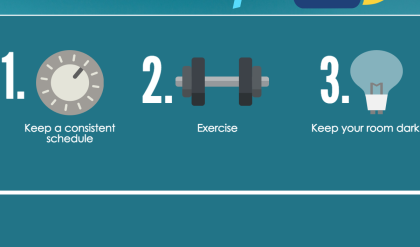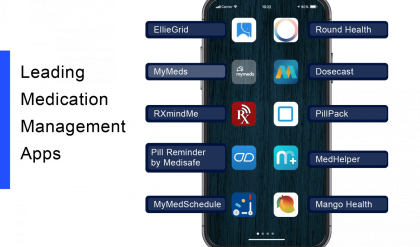
Beat the Burnout: Effective Strategies for Managing Stress and Preventing Exhaustion
Burnout. The word itself feels heavy, a lead weight dragging at the heels of ambition and productivity. It’s not simply tiredness; it’s a creeping exhaustion that seeps into every facet of life, leaving you feeling emotionally drained, cynical, and profoundly ineffective. But burnout isn’t an inevitable consequence of a demanding life. It’s a condition that can be understood, managed, and even prevented. This isn’t about achieving a mythical “work-life balance” – a phrase often more aspirational than achievable – but about cultivating a sustainable relationship with your work, your responsibilities, and yourself.
Understanding the Beast: Identifying the Symptoms
Before tackling burnout, we need to recognize its insidious nature. It’s not a sudden collapse, but a gradual erosion. Are you experiencing any of these?
- Emotional Exhaustion: Feeling constantly drained, lacking energy, and emotionally numb.
- Depersonalization: Developing a cynical or detached attitude towards your work and those you interact with.
- Reduced Personal Accomplishment: Feeling ineffective, lacking a sense of purpose, and struggling to achieve your goals.
If these resonate, it’s time to take action. Ignoring these warning signs is like ignoring a flickering warning light in your car – it might not immediately cripple you, but it will eventually lead to serious problems.
Strategic Countermeasures: Rebuilding Your Resilience
The fight against burnout isn’t a singular battle; it’s a sustained campaign requiring multifaceted strategies. Here are some powerful weapons in your arsenal:
1. Mindfulness & Meditation: Finding Your Center
Imagine your mind as a turbulent sea. Mindfulness is learning to navigate those waves, rather than being tossed around by them. Regular meditation, even just 5-10 minutes a day, can significantly reduce stress hormones and improve emotional regulation. Apps like Calm and Headspace offer guided meditations for all levels.
2. The Power of Physical Activity: Moving Beyond the Mental
Exercise isn’t just about physical health; it’s a powerful antidote to stress. Physical activity releases endorphins, natural mood boosters that combat anxiety and depression. Find an activity you enjoy – whether it’s running, yoga, swimming, or dancing – and make it a regular part of your routine.
3. The Art of Saying “No”: Protecting Your Time
Learning to prioritize and say “no” to non-essential commitments is crucial. Overcommitting is a fast track to burnout. Prioritize tasks based on importance and urgency, and don’t be afraid to politely decline requests that stretch you too thin.
4. Nourishment for Body and Soul: Fueling Your Resilience
What you eat directly impacts your energy levels and mood. Prioritize whole foods, stay hydrated, and limit processed foods, sugar, and excessive caffeine. Nourishing your body is an act of self-care that pays dividends in resilience.
5. The Importance of Sleep: Rest and Recharge
Sleep deprivation is a burnout accelerant. Aim for 7-9 hours of quality sleep each night. Establish a regular sleep schedule, create a relaxing bedtime routine, and optimize your sleep environment for darkness and quiet.
6. Reconnect & Recalibrate: Cultivating Social Connections
Humans are social creatures. Isolation exacerbates stress and burnout. Nurture your relationships with loved ones, spend time in nature, and engage in activities that bring you joy and connection.
7. Professional Boundaries: Setting Limits and Expectations
Clearly define your work hours and stick to them as much as possible. Avoid constantly checking emails or messages outside of work hours. Communicate your boundaries to your colleagues and supervisors.
Table: Quick Wins Against Burnout
| Strategy | Time Commitment | Impact |
|---|---|---|
| 5-minute Meditation | 5 minutes | Reduced stress |
| 30-minute Walk | 30 minutes | Improved mood |
| Saying “No” | Varies | Reduced overwhelm |
| Healthy Meal | 20 minutes | Increased energy |
| 7-8 hours Sleep | 7-8 hours | Improved focus |
Prevention is Key: Cultivating a Sustainable Lifestyle
Preventing burnout is a proactive endeavor. By incorporating these strategies into your daily life, you’re not just fighting burnout; you’re building a foundation of resilience that will serve you well for years to come. Remember that self-care isn’t selfish; it’s essential for sustainable well-being and productivity. It’s an investment in your future, both personally and professionally. Prioritize your well-being, and watch your resilience flourish.

Additional Information
Beyond the Surface: A Deeper Dive into Beat the Burnout: Effective Strategies for Managing Stress and Preventing Exhaustion
While a foundational article on “Beat the Burnout” likely outlines practical strategies for stress management, a deeper analysis requires exploring the underlying mechanisms of burnout, the nuances of individual responses, and the limitations of commonly prescribed solutions. This analysis will delve into these areas, adding layers of complexity and practical application to the initial framework.
1. Understanding the Multifaceted Nature of Burnout:
The simplistic view of burnout as merely “exhaustion” is inadequate. Maslach’s burnout model, widely accepted, highlights three key dimensions:
-
Emotional Exhaustion: This is the feeling of being drained and depleted emotionally. It’s not just fatigue; it’s a sense of being emotionally empty, unable to give anymore. Example: A teacher consistently dealing with challenging student behavior may experience emotional exhaustion, exhibiting apathy and detachment.
-
Depersonalization/Cynicism: This involves developing negative, detached, or cynical attitudes towards one’s work and the people one serves. This can manifest as increased irritability, impatience, and a lack of empathy. Example: A healthcare professional facing overwhelming patient loads and inadequate resources may become cynical about their profession and patients.
-
Reduced Personal Accomplishment: This is a feeling of incompetence and a diminished sense of self-efficacy. Individuals feel they are not achieving what they should be, leading to feelings of frustration and failure. Example: A software engineer facing constant pressure to meet unrealistic deadlines may feel a growing sense of inadequacy and a decline in their perceived professional value.
2. Individual Variability in Burnout Vulnerability:
Burnout is not a monolithic experience. Individual differences in personality traits, coping mechanisms, and support systems significantly influence susceptibility. For instance:
- Type D personality: Individuals with this personality type (characterized by high levels of negative affectivity and social inhibition) are at heightened risk for burnout. Their inability to express negative emotions and seek social support contributes to emotional exhaustion.
- Perfectionism: While often associated with high achievement, perfectionism can be a significant risk factor. The relentless pursuit of flawlessness leads to increased stress and self-criticism, fueling burnout.
- Lack of social support: Strong social networks act as buffers against stress. Individuals lacking supportive relationships are more vulnerable to the negative impacts of work pressure.
3. Limitations of Common Strategies and the Need for Personalized Approaches:
While techniques like mindfulness, exercise, and time management are beneficial, they are not a panacea. Their effectiveness depends on individual circumstances and consistent implementation. A critical analysis needs to address:
- The “self-care” fallacy: Encouraging individuals to simply “take care of themselves” can be dismissive of systemic issues contributing to burnout (e.g., excessive workload, inadequate resources, poor management). Addressing these systemic factors is crucial.
- The challenge of sustained practice: Mindfulness or regular exercise requires consistent effort. The effectiveness of these strategies diminishes if not integrated into a long-term lifestyle.
- The need for professional help: In severe cases, professional intervention (therapy, coaching) is necessary. Ignoring severe burnout can lead to serious mental health consequences, including depression and anxiety. Statistic: The World Health Organization recognizes burnout as an “occupational phenomenon” and acknowledges its serious health implications.
4. Proactive Strategies: Building Resilience and Preventing Burnout:
A proactive approach is vital. This involves:
- Setting realistic expectations and boundaries: Learning to say “no” and prioritizing tasks is crucial.
- Developing strong coping mechanisms: This includes identifying healthy ways to manage stress (e.g., exercise, meditation, hobbies).
- Seeking social support: Building and maintaining strong relationships provides emotional support and a sense of belonging.
- Promoting a positive work environment: Organizations have a responsibility to create supportive and respectful workplaces that prioritize employee well-being. This includes offering resources like employee assistance programs (EAPs) and promoting work-life balance.
Conclusion:
Effectively beating burnout requires a multi-faceted approach that goes beyond simplistic solutions. Understanding the underlying mechanisms, acknowledging individual differences, addressing systemic issues, and promoting proactive strategies are essential for creating a sustainable path to well-being and preventing exhaustion. Future research should focus on developing more personalized and culturally sensitive interventions that address the complex interplay of individual, organizational, and societal factors contributing to burnout.






